Amanda Levete’s V&A extension weaves seamlessly into the historic heritage of the museum
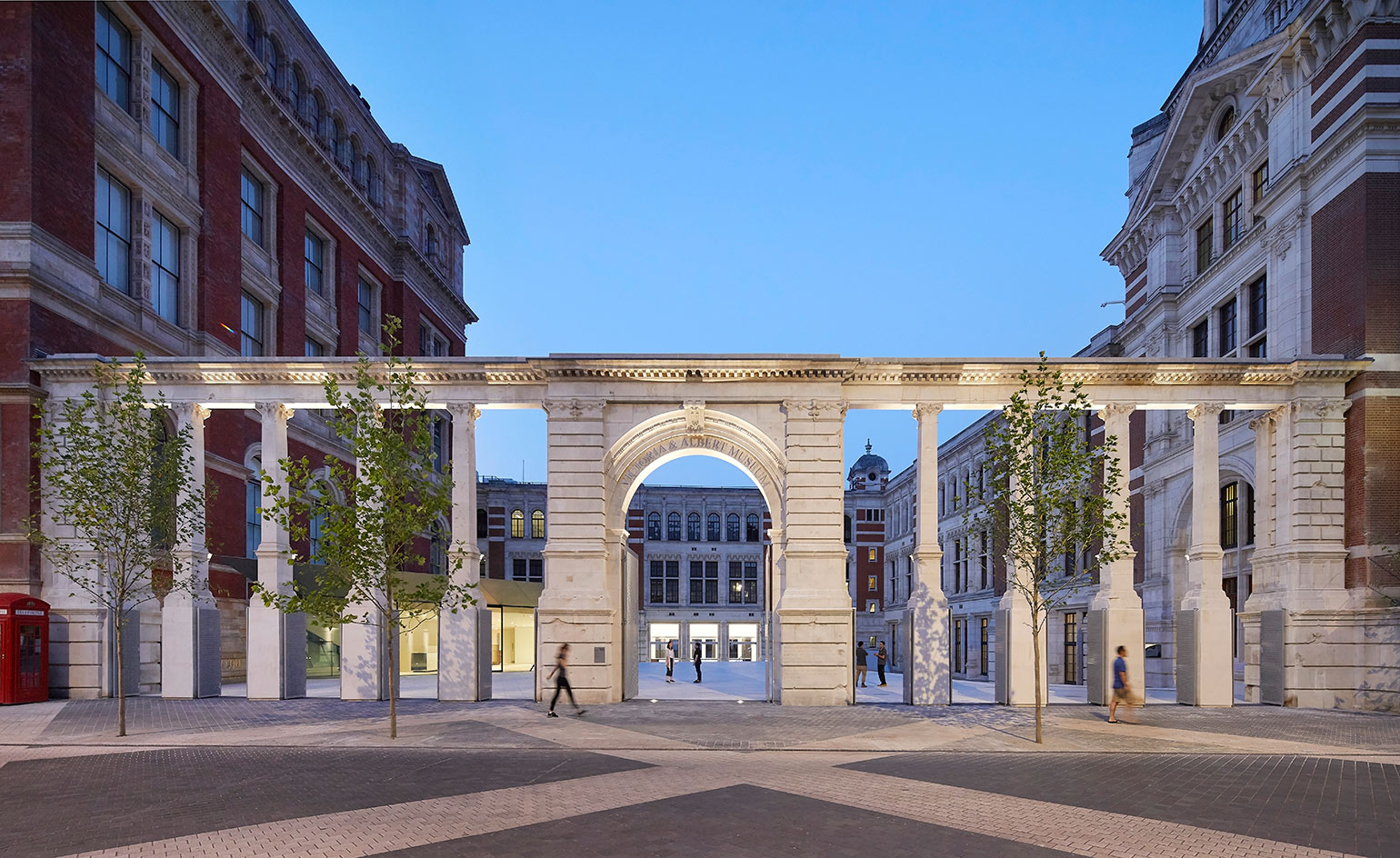
London’s Victoria & Albert Museum, the global don of applied arts boasting superb collections of textiles, ceramics and metal wares, is adding more strings to its bow with a sleek new ‘quarter’ designed by AL_A, led by Amanda Levete. New facilities include a huge performance space, art handling units, a cargo entrance and a modern courtyard entrance, which smoothly ensconces a café and shop into its porcelain-tiled midst, and guides visitors to the new entrance hall.
Completing ‘Albertopolis’ – a vision devised by Prince Albert in Victorian England for a cultural quarter in South Kensington – the extension opens the V&A up onto Exhibition Road, joining neighbours the Science Museum and the Natural History Museum. In addition, it hopes to smoothly procure some new audiences, attracted in by the architecture of the contemporary courtyard, which includes a futuristic-looking metallic oculus, and a sweeping aluminium extension that glides between the existing Grade I building.

A view of The Aston Webb Screen at the entrance of the new Exhibition Road Quarter at the V&A Museum, designed by AL_A.
This is just the tip of the iceberg. Eighteen metres below ground is where the rest of the story plays out; the 11,100 sq m column-less Sainsbury Gallery – which stretches 38m in length – will be a new venue for live music and ‘performance’ – a word that new director Tristram Hunt, appointed in January 2017, purposefully introduced into the V&A’s lexicon within his opening remarks at the launch this week. In a spirit of renewal and evolution of the much-loved museum, Levete weaves sensitive references to its heritage throughout her contemporary design. The 11,000 handmade porcelain tiles that coat the courtyard in a luminous surface were inspired by the collections.
Levete's design also allowed the Aston Webb screen, originally built in 1909, to be preserved yet also adapted into 11 colonnades for its new use as a public entrance. Previously in place to hide the V&A’s clunky boilers, the screen was hailed with shrapnel during the Second World War creating a pattern of dents and marks, that became a part of the heritage of the structure. Levete beautifully interpreted the marks through delicate perforations in the sleek aluminium gates that neatly fold back to allow visitors to filter through the screen from Exhibition Road.
After six years of planning, the Exhibition Road Quarter will open with an arts festival allowing the public to explore the new spaces that AL_A have woven into the 165-year-old museum.
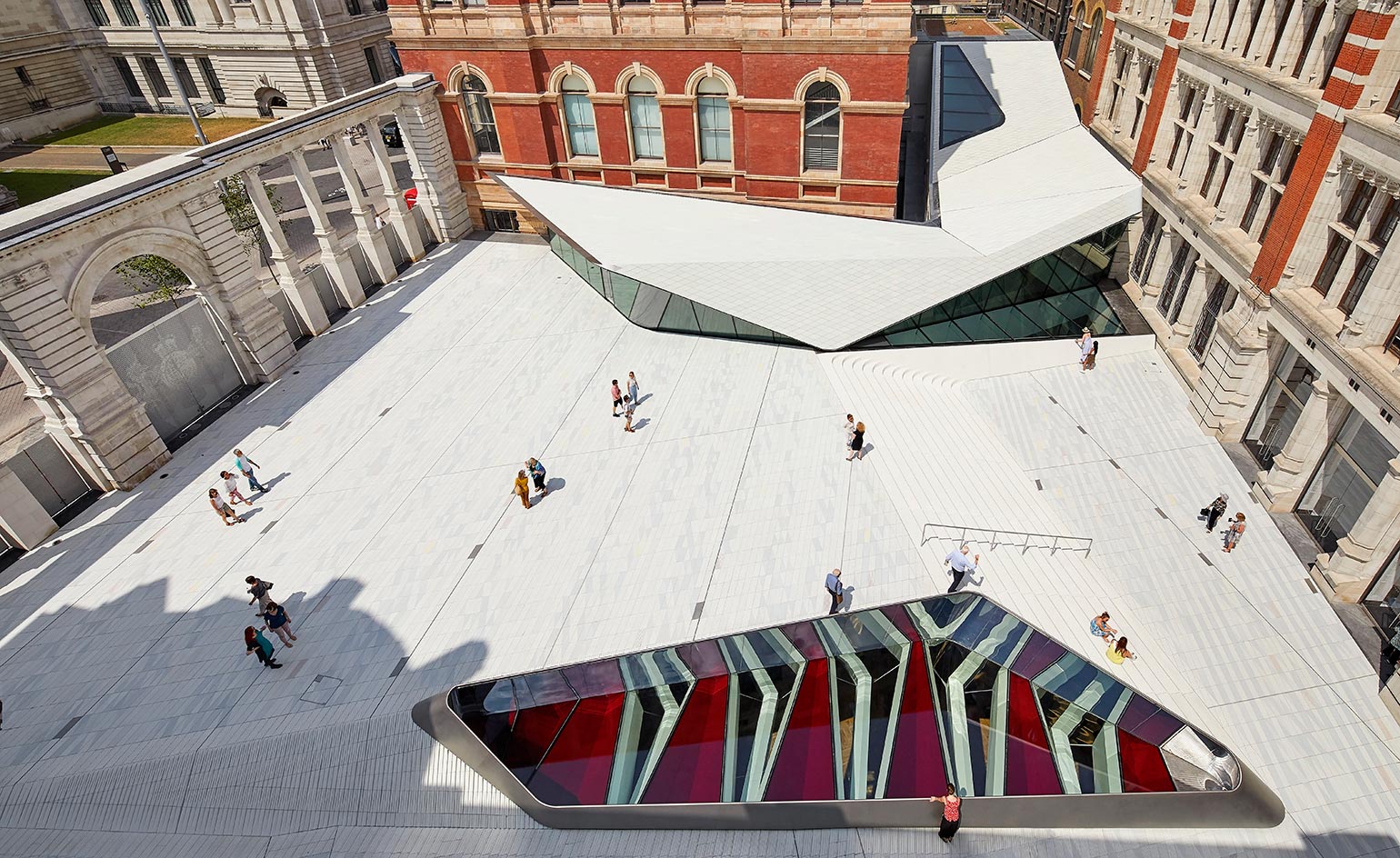
The Sackler Courtyard, covered with porcelain tiles, featuring the cafe and an oculus, with view down into the new performance hall
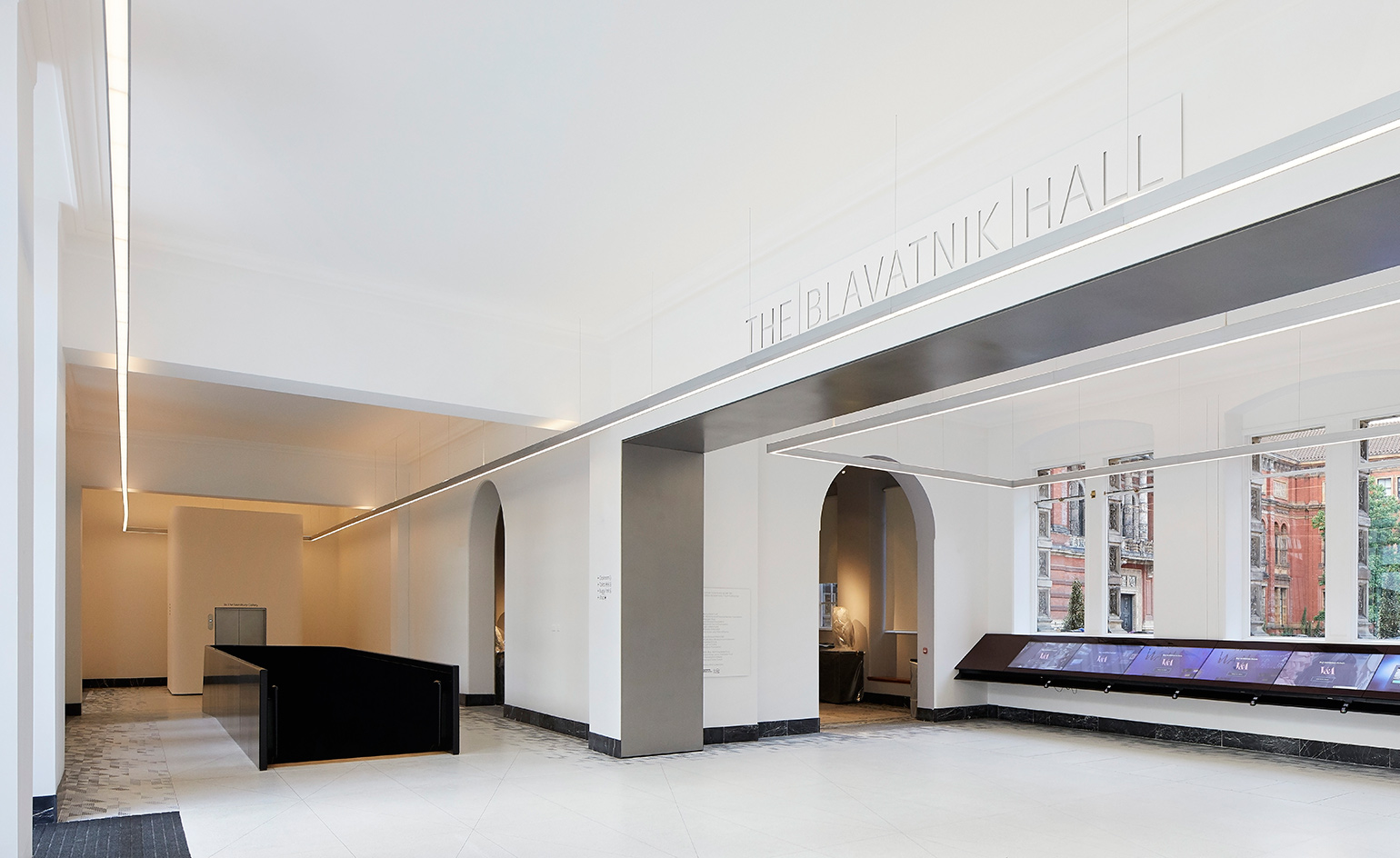
The Blavatnik Hall where visitors will enter the V&A building after moving through the courtyard
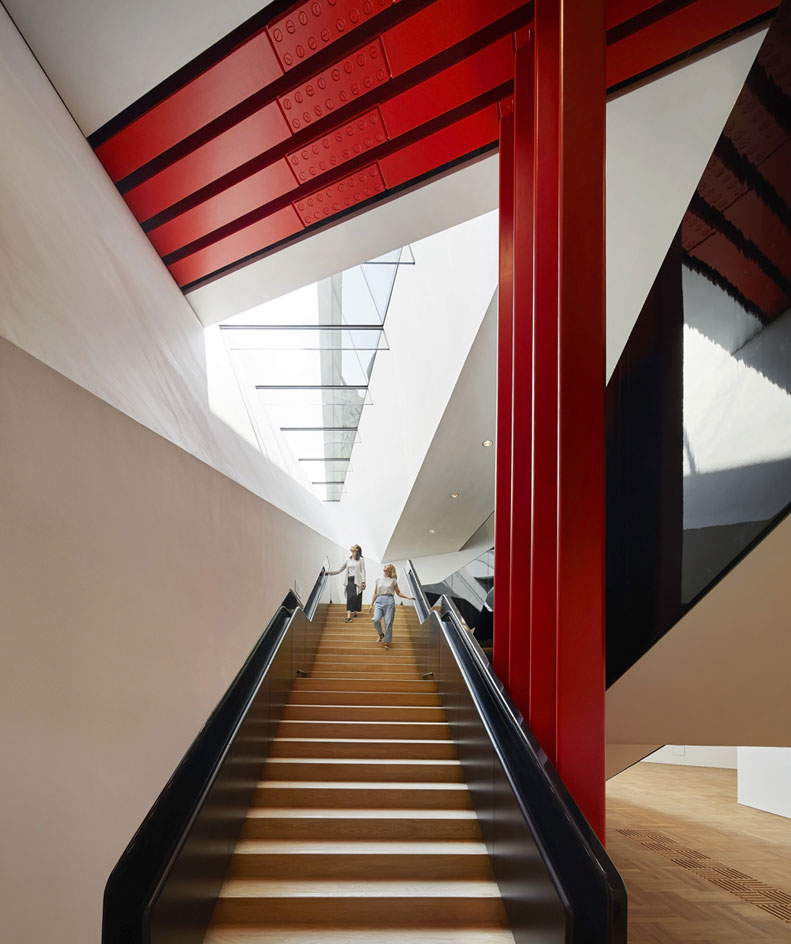
The ascending staircase in the new Exhibition Road Quarter
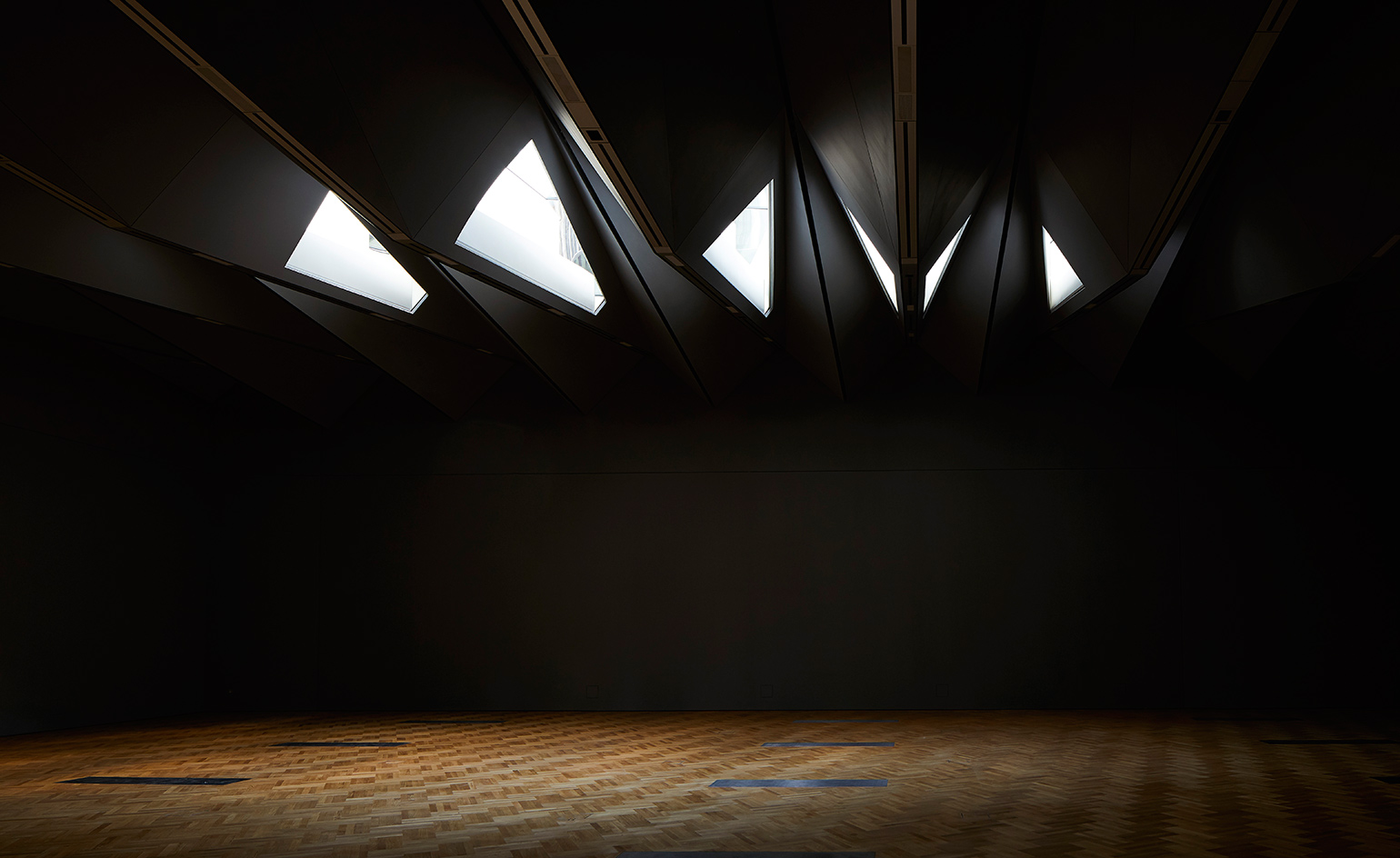
The Sainsbury Gallery which is purpose built for performative art displays. Triangular roof lights bring in natural light from the courtyard directly above
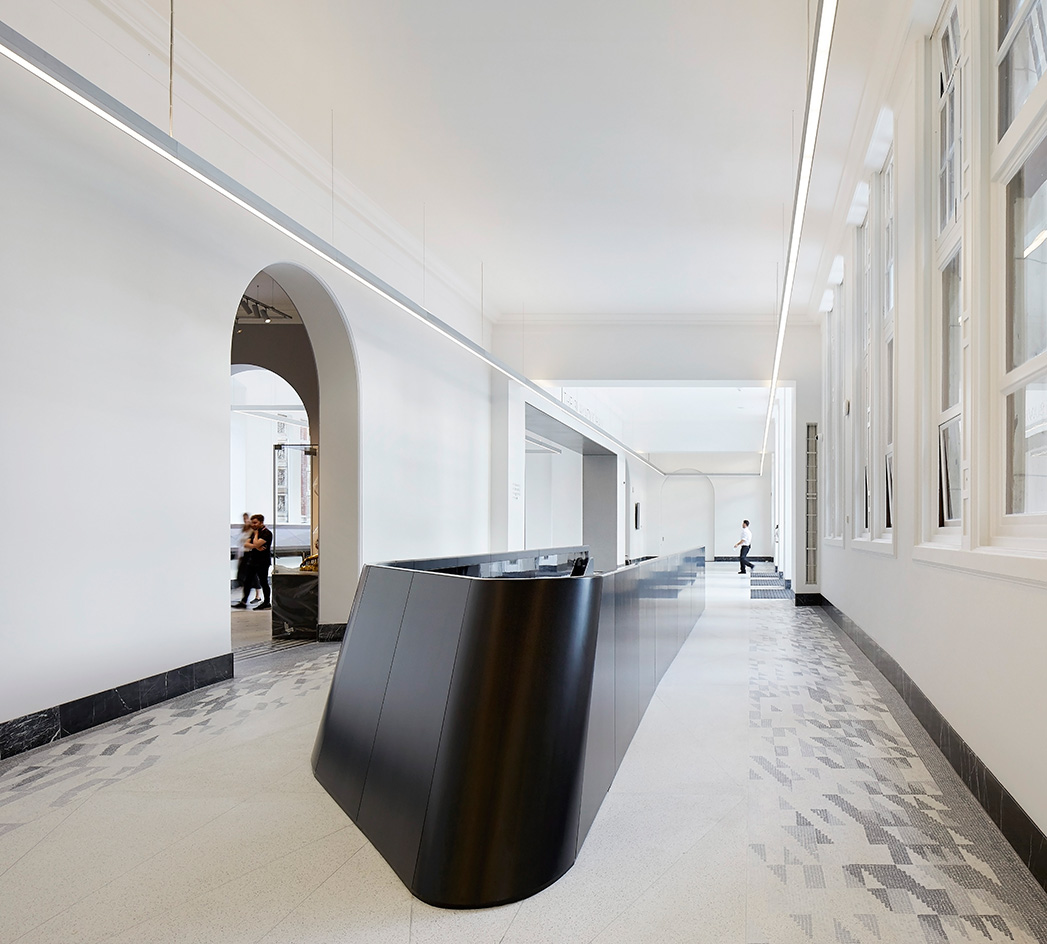
The sleek black information desk in The Blavatnik Hall
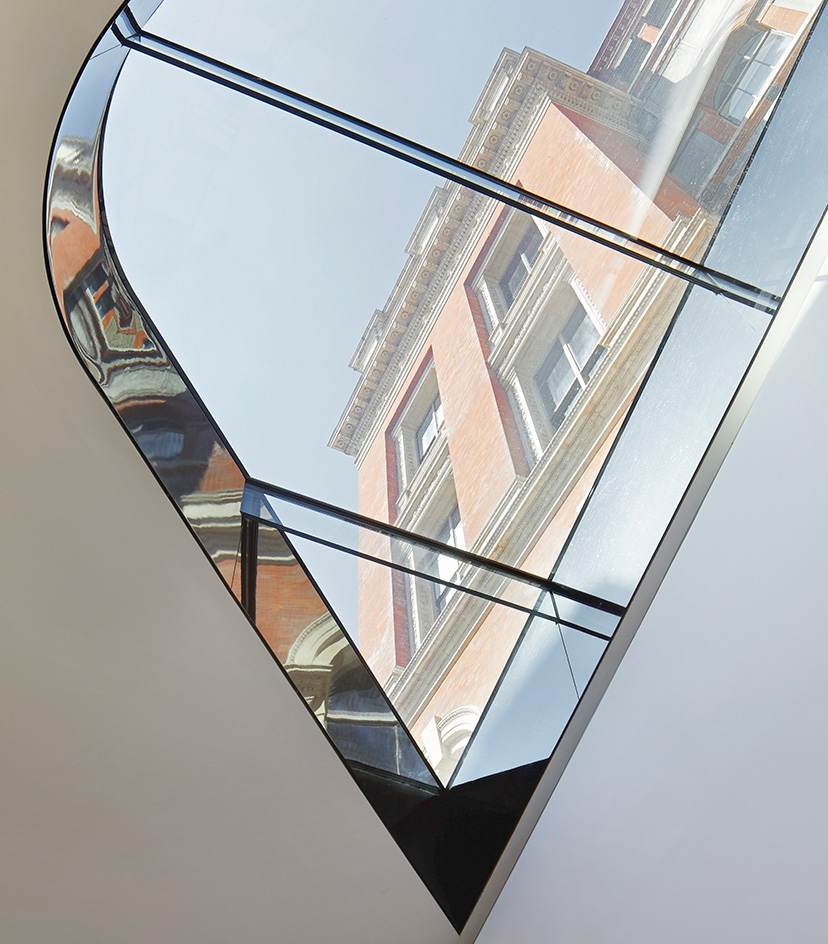
A roof light in the new cafe framing views of the V&A’s historic Henry Cole Wing facade
INFORMATION
For more information, visit the AL_A website and the V&A website
ADDRESS
V&A Museum
Exhibition Road
London
SW7 2RL
Wallpaper* Newsletter
Receive our daily digest of inspiration, escapism and design stories from around the world direct to your inbox.
Harriet Thorpe is a writer, journalist and editor covering architecture, design and culture, with particular interest in sustainability, 20th-century architecture and community. After studying History of Art at the School of Oriental and African Studies (SOAS) and Journalism at City University in London, she developed her interest in architecture working at Wallpaper* magazine and today contributes to Wallpaper*, The World of Interiors and Icon magazine, amongst other titles. She is author of The Sustainable City (2022, Hoxton Mini Press), a book about sustainable architecture in London, and the Modern Cambridge Map (2023, Blue Crow Media), a map of 20th-century architecture in Cambridge, the city where she grew up.
-
 Marylebone restaurant Nina turns up the volume on Italian dining
Marylebone restaurant Nina turns up the volume on Italian diningAt Nina, don’t expect a view of the Amalfi Coast. Do expect pasta, leopard print and industrial chic
By Sofia de la Cruz
-
 Tour the wonderful homes of ‘Casa Mexicana’, an ode to residential architecture in Mexico
Tour the wonderful homes of ‘Casa Mexicana’, an ode to residential architecture in Mexico‘Casa Mexicana’ is a new book celebrating the country’s residential architecture, highlighting its influence across the world
By Ellie Stathaki
-
 Jonathan Anderson is heading to Dior Men
Jonathan Anderson is heading to Dior MenAfter months of speculation, it has been confirmed this morning that Jonathan Anderson, who left Loewe earlier this year, is the successor to Kim Jones at Dior Men
By Jack Moss
-
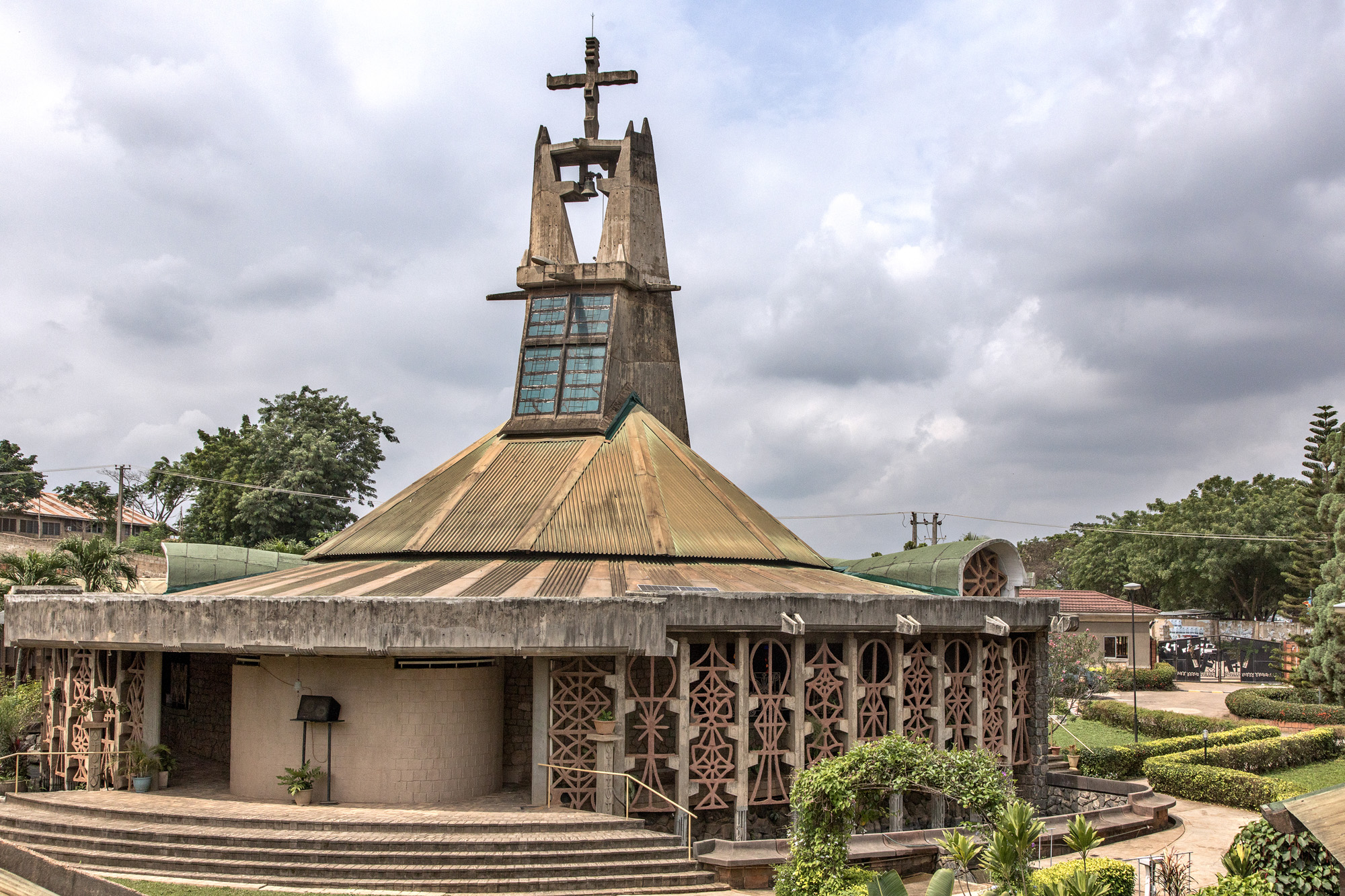 The pioneering architecture of Nigerian artist-designer Demas Nwoko
The pioneering architecture of Nigerian artist-designer Demas NwokoThe work of pioneering Nigerian artist-designer Demas Nwoko has stood the test of time; as he is awarded the Golden Lion for Lifetime Achievement at the Biennale Architettura 2023
By Ijeoma Ndukwe
-
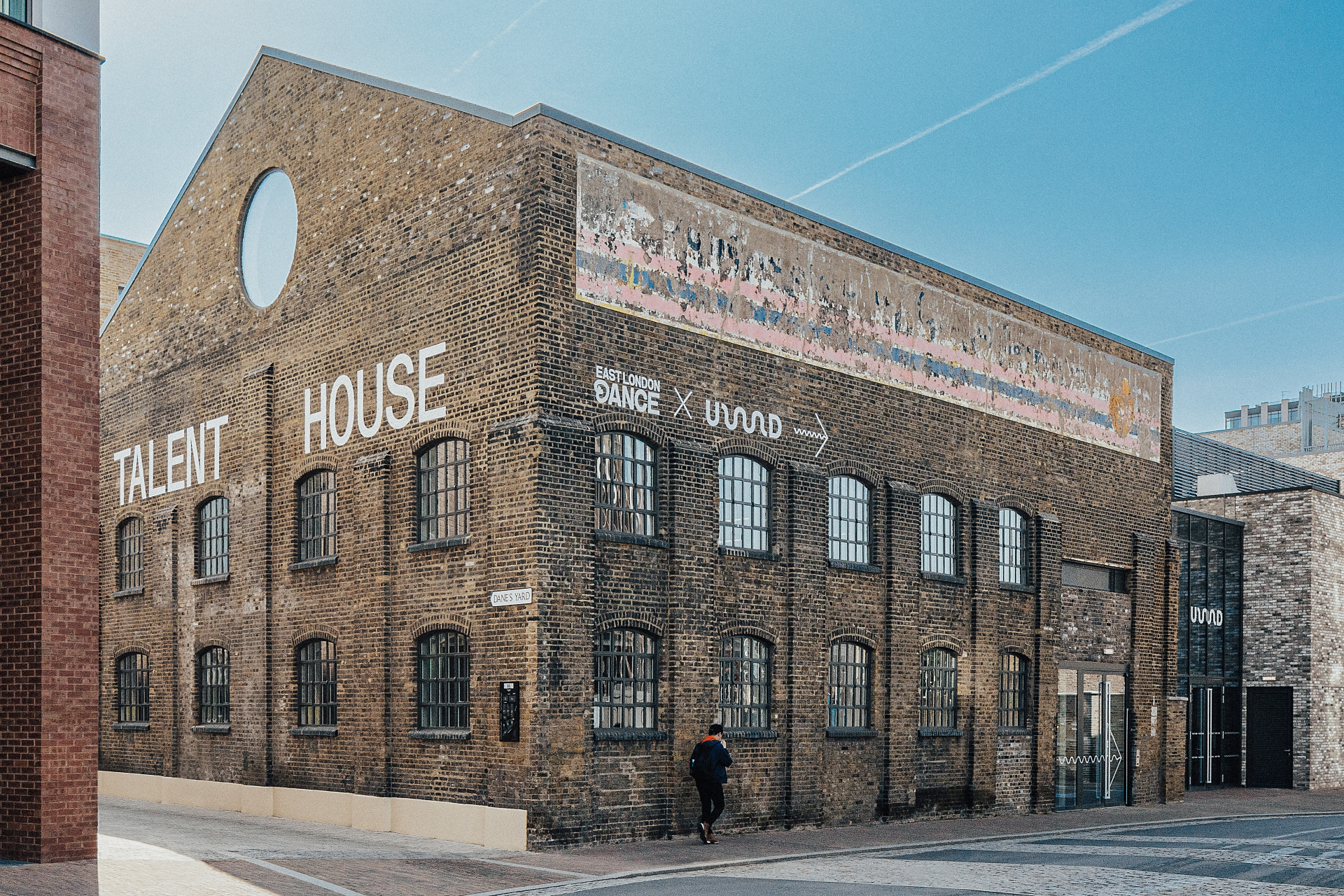 Talent House opens in east London to nurture diverse talent in the arts
Talent House opens in east London to nurture diverse talent in the artsThe Talent House is an enclave for London’s future arts talent
By Josh Fenton
-
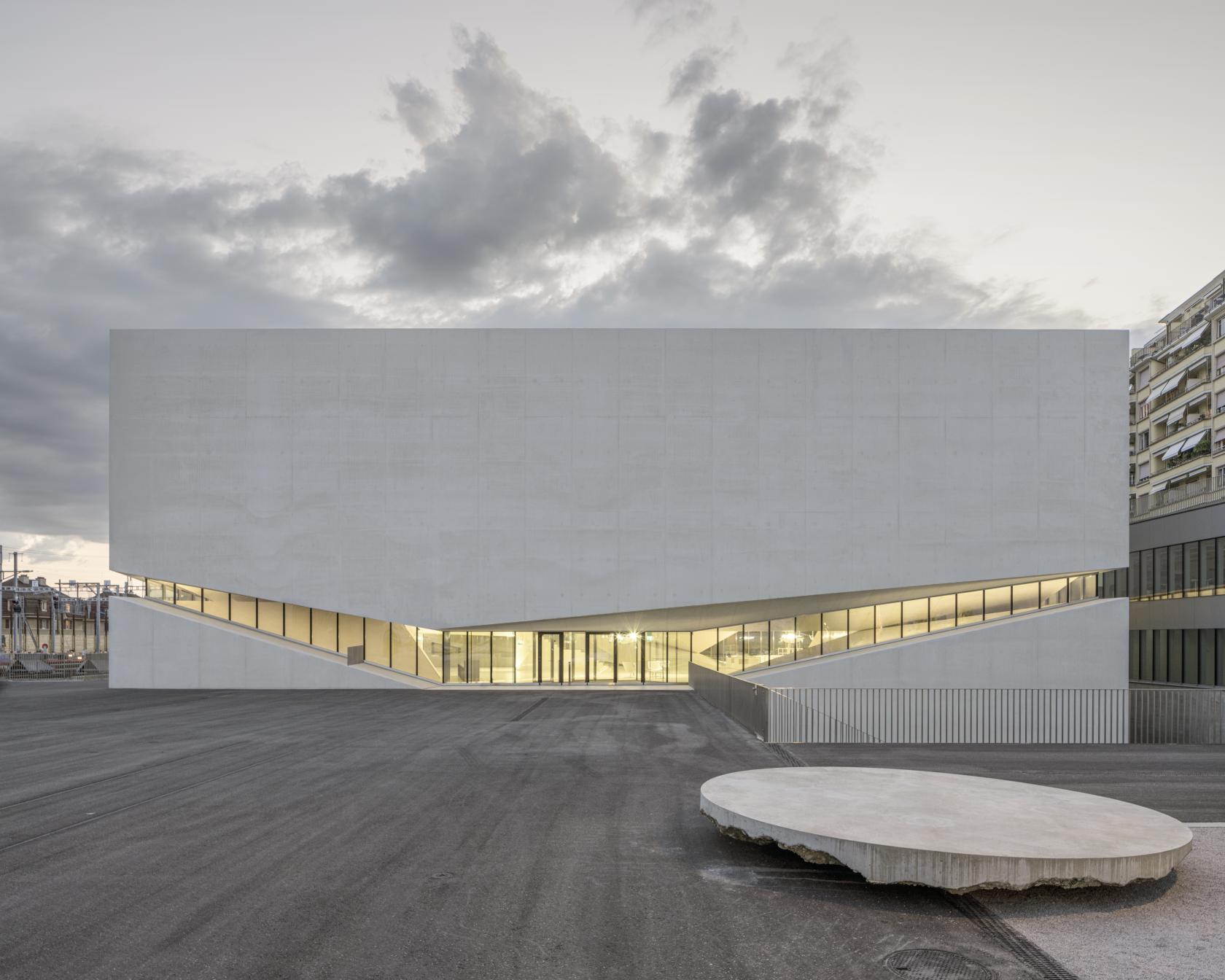 Twin cultural destination Photo Elysée and Mudac completed in Lausanne
Twin cultural destination Photo Elysée and Mudac completed in LausanneArchitecture studio Aires Mateus completes its building to house Photo Elysée and Mudac in Lausanne, Switzerland
By Ellie Stathaki
-
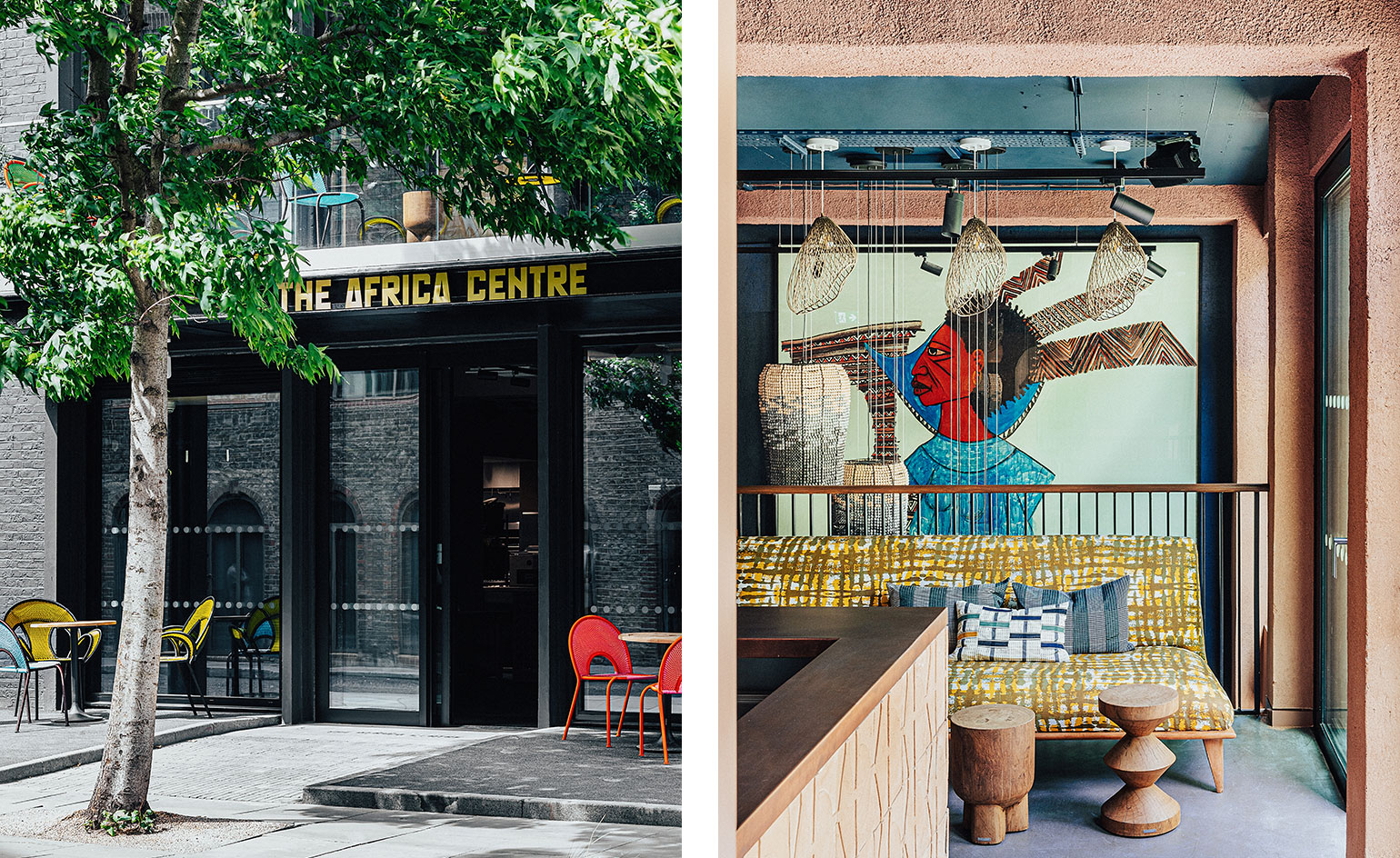 The Africa Centre reopens to celebrate culture and community
The Africa Centre reopens to celebrate culture and communityThe Africa Centre has reopened to a design by London-based architecture studio Freehaus, and is ready to support community and cultural exchange from its new Southwark home
By Ellie Stathaki
-
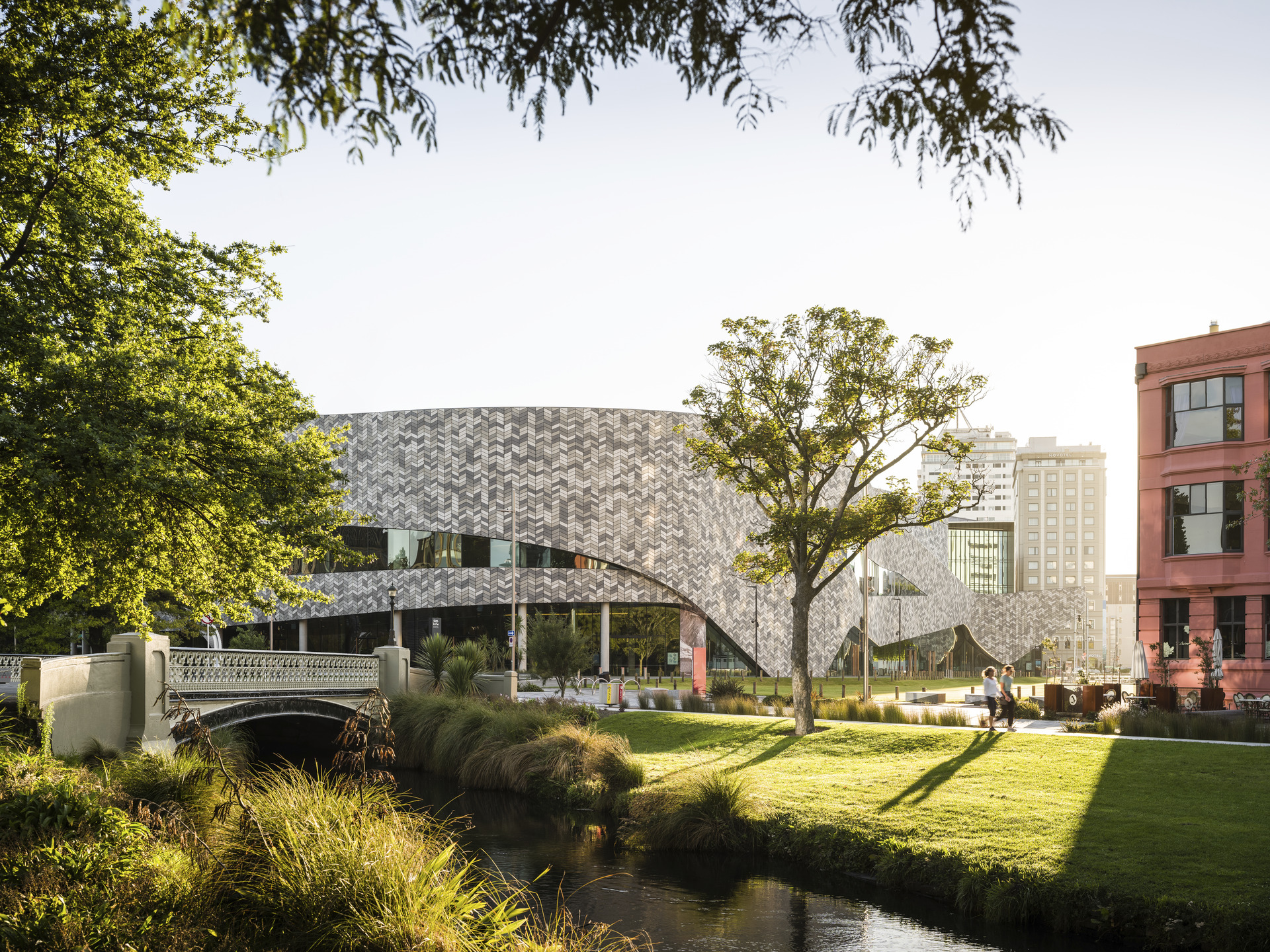 Christchurch’s Te Pae centre reopens celebrating all New Zealanders
Christchurch’s Te Pae centre reopens celebrating all New ZealandersChristchurch's Te Pae Convention and Exhibition Centre opens its doors again thanks to architects Woods Bagot and Warren & Mahoney, and arts, culture and heritage advocate Puamiria Parata-Goodall
By Ellie Stathaki
-
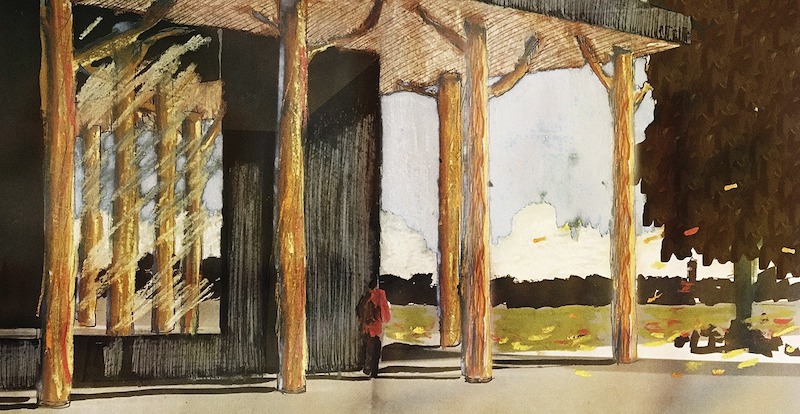 Helsinki’s Pikku-Finlandia temporary event space is a student project come to life
Helsinki’s Pikku-Finlandia temporary event space is a student project come to lifePikku-Finlandia, a sustainable, temporary wood event space, has opened to the public in Helsinki – and it’s born of the ambitious thesis of two students, Jaakko Torvinen and Elli Wendelin, featured in Wallpaper’s 2022 Graduate Directory
By Nasra Abdullahi
-
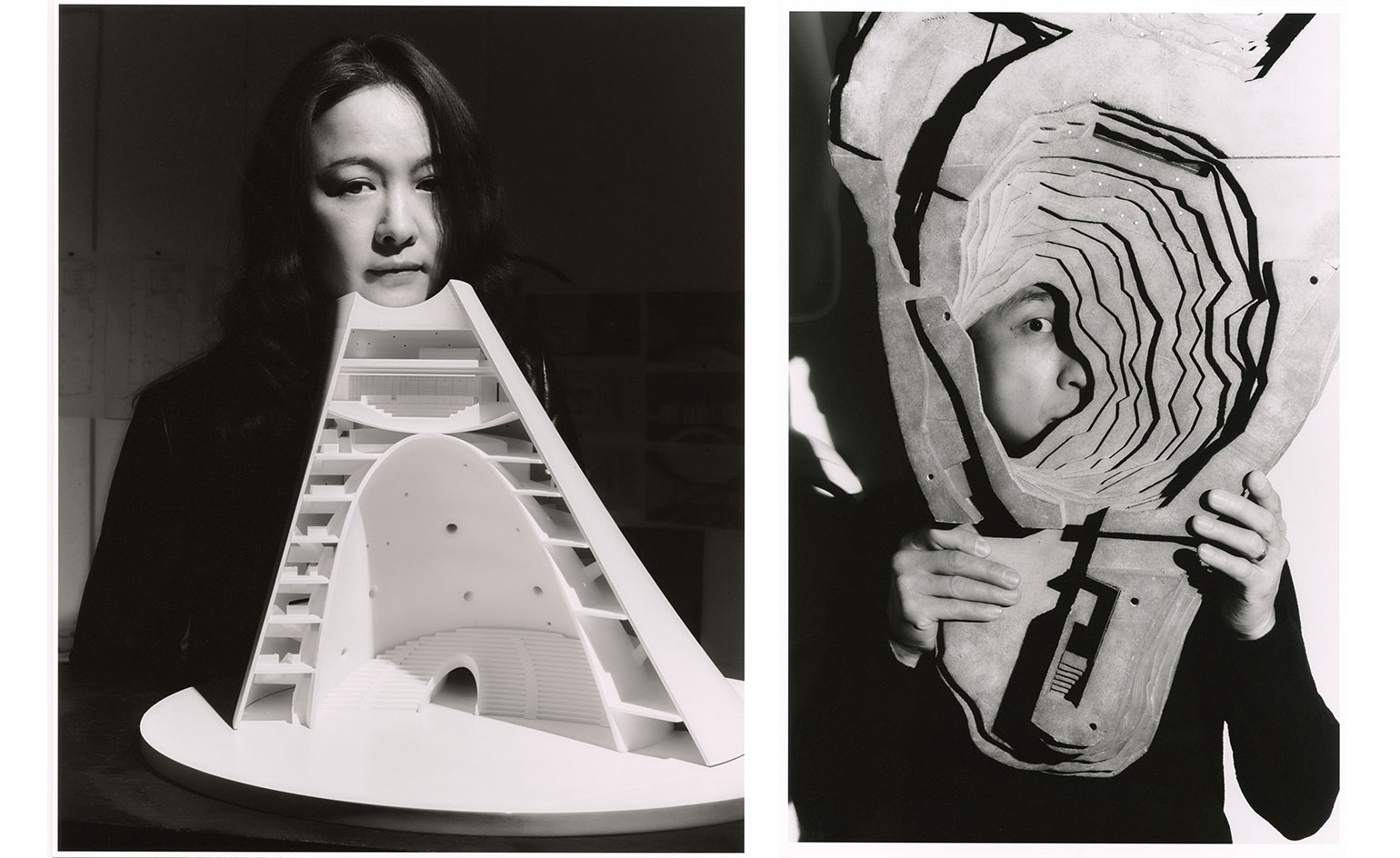 Open architecture on building and China’s cultural landscape
Open architecture on building and China’s cultural landscapeOpen Architecture’s perfectly considered projects either disappear into the landscape or become new landmarks
By Yoko Choy
-
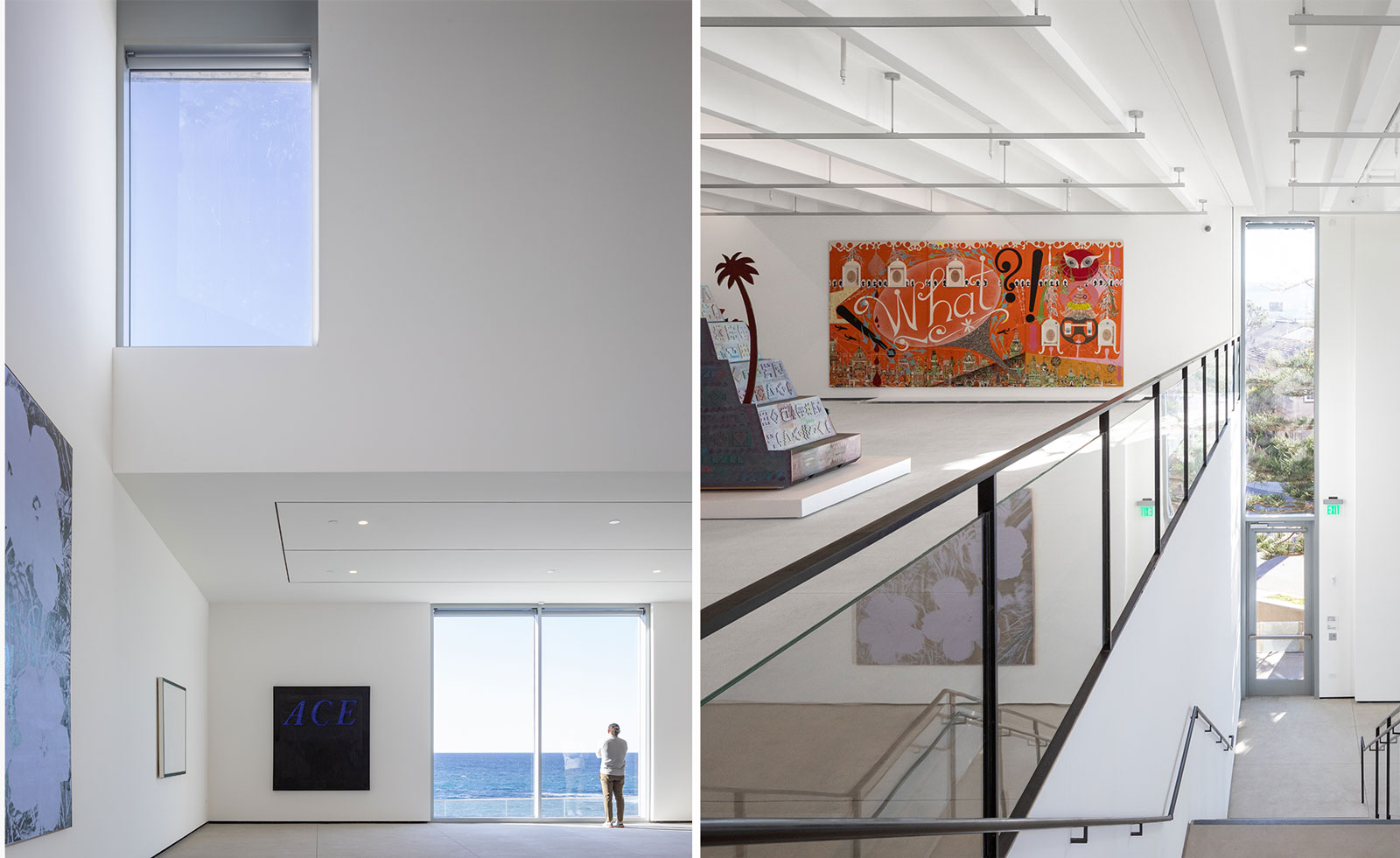 The Museum of Contemporary Art San Diego unveils a bigger and brighter new space
The Museum of Contemporary Art San Diego unveils a bigger and brighter new spaceSelldorf Architects has welcomed the elements in to the Museum of Contemporary Art San Diego’s new light-filled design
By Hannah Silver